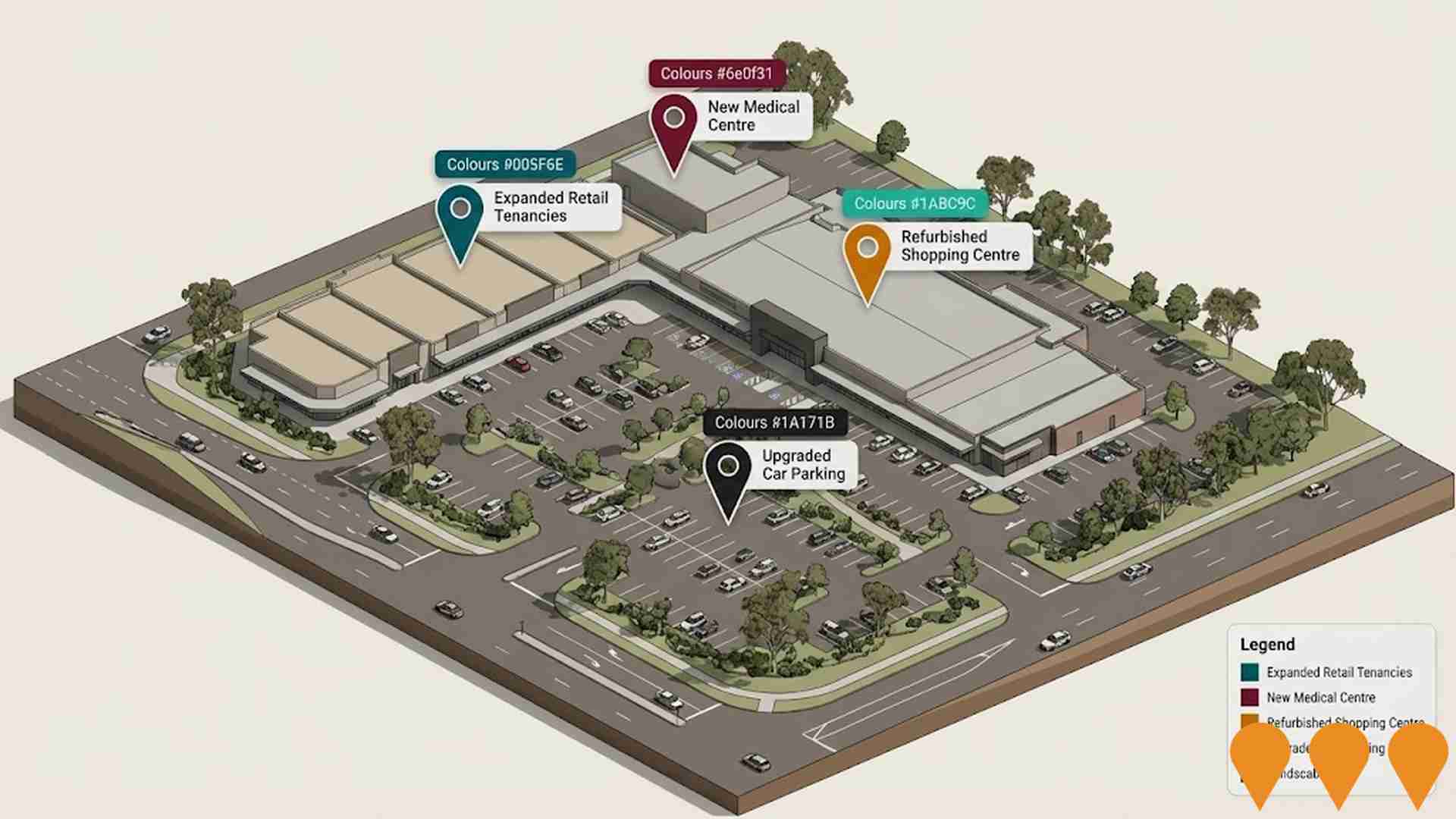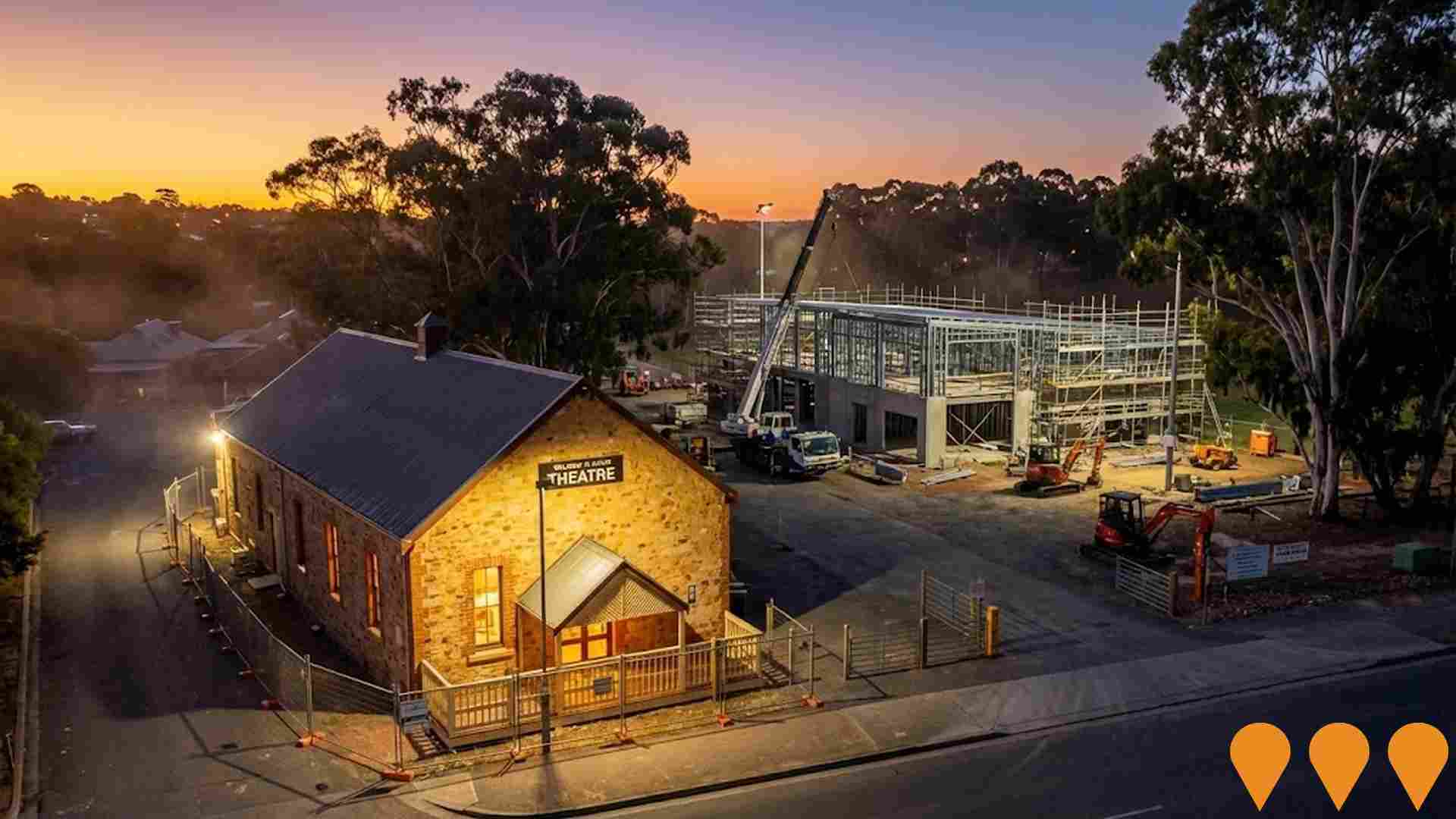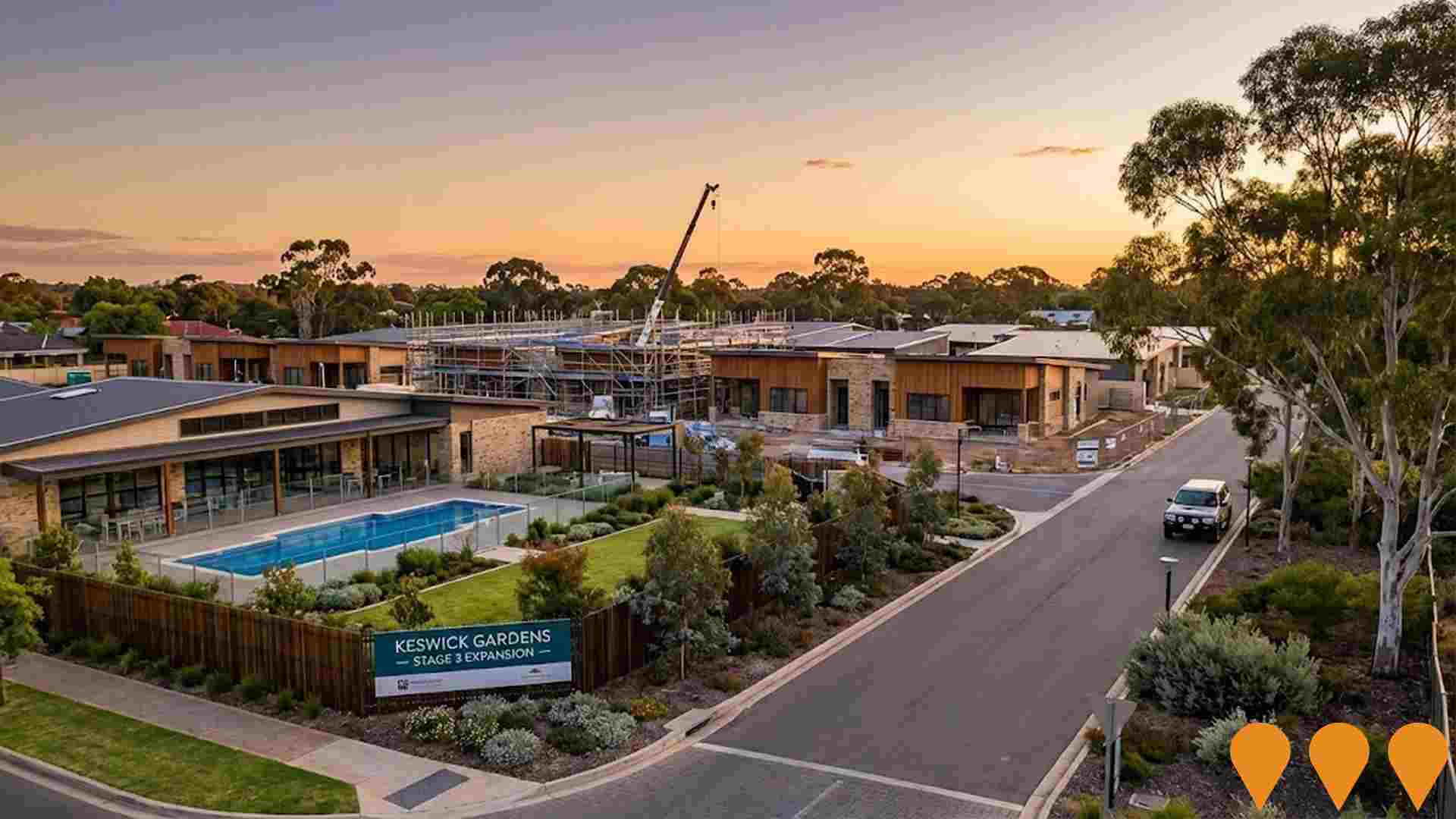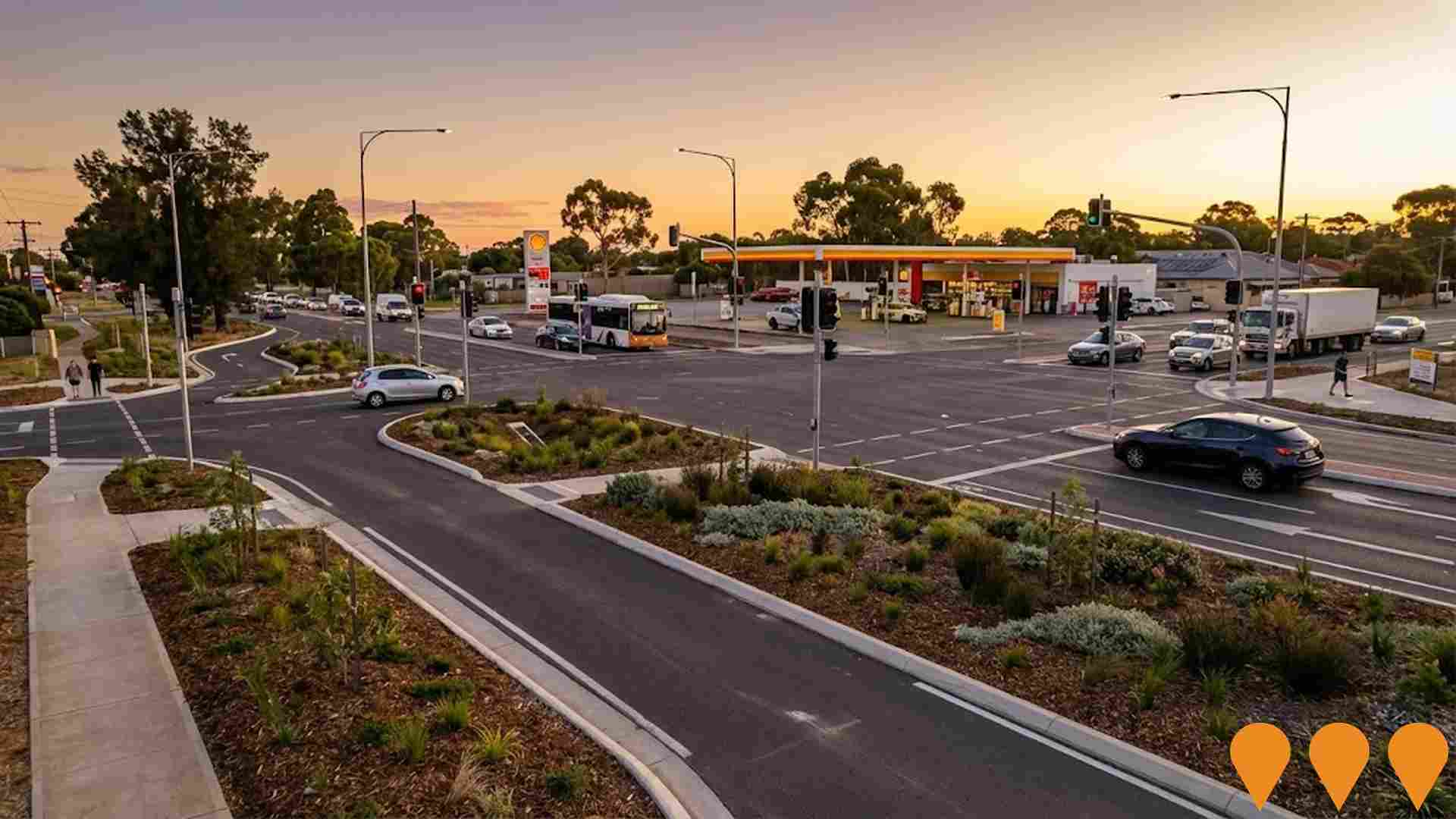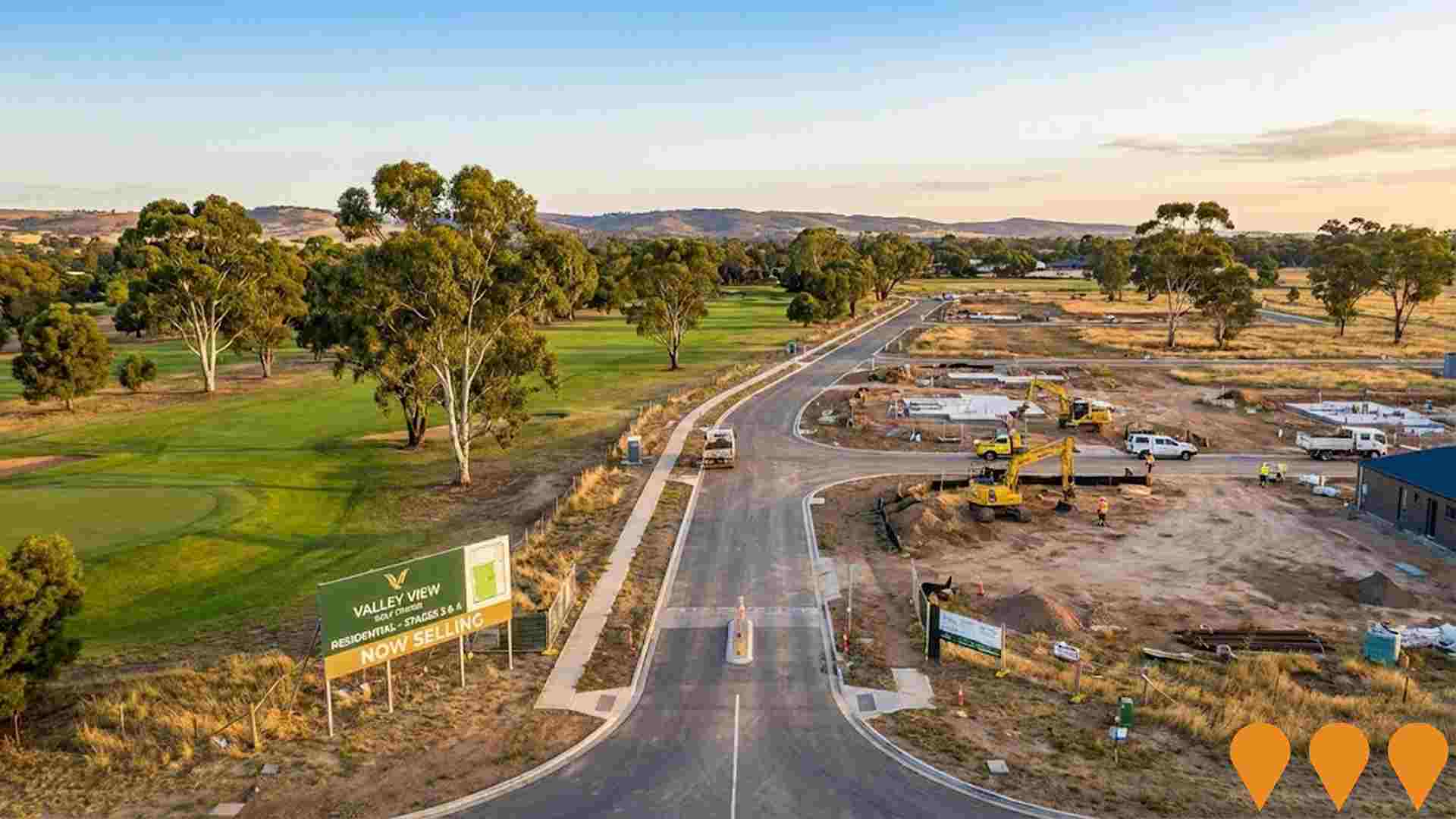Chart Color Schemes
est. as @ -- *
ABS ERP | -- people | --
2021 Census | -- people
Sales Activity
Curious about local property values? Filter the chart to assess the volume and appreciation (including resales) trends and regional comparisons, or scroll to the map below view this information at an individual property level.
Find a Recent Sale
Sales Detail
Population
Para Hills is positioned among the lower quartile of areas assessed nationally for population growth based on AreaSearch's assessment of recent, and medium term trends
Para Hills' population was approximately 15,467 as of November 2025. This figure represents an increase of 373 people since the 2021 Census, which reported a population of 15,094. The growth is inferred from ABS data showing an estimated resident population of 15,434 in June 2024 and an additional 150 validated new addresses since the Census date. This results in a population density of 1,520 persons per square kilometer, higher than the average seen across national locations assessed by AreaSearch. Para Hills' growth rate of 2.5% since the census is within 1.2 percentage points of the SA3 area's growth rate of 3.7%, indicating competitive growth fundamentals. Overseas migration contributed approximately 61.8% of overall population gains during recent periods, driving primary population growth in the area.
AreaSearch uses ABS/Geoscience Australia projections for each SA2 area, released in 2024 with a base year of 2022. For areas not covered by this data and years post-2032, the SA State Government's Regional/LGA projections by age category are adopted, based on 2021 data and adjusted using a method of weighted aggregation of population growth from LGA to SA2 levels. Based on projected demographic shifts, Para Hills is expected to grow by approximately 741 persons to 2041, recording a gain of around 4.5% in total over the 17-year period.
Frequently Asked Questions - Population
Development
Recent residential development output has been above average within Para Hills when compared nationally
Para Hills has recorded approximately 93 residential properties granted approval annually. Over the past five financial years, from FY21 to FY25, around 468 homes were approved, with an additional 36 approved so far in FY26. On average, about 0.9 new residents per year have been added per dwelling constructed over these five financial years.
This suggests that new construction is meeting or exceeding demand, providing more options for buyers and potentially supporting population growth beyond current projections. The average expected construction cost value of new properties is around $223,000, which is below regional norms, indicating more affordable housing options. In FY26, there have been approximately $6.7 million in commercial approvals, suggesting limited focus on commercial development compared to residential growth. When comparing Para Hills' development activity with Greater Adelaide, it shows around 70.0% higher activity per person, which could provide buyers with ample choice in the area.
New developments in Para Hills consist of approximately 92.0% standalone homes and 8.0% attached dwellings, preserving the area's suburban nature and attracting space-seeking buyers who prefer detached housing. With around 158 people per dwelling approval, Para Hills is characterized as a low-density area. Population forecasts indicate that Para Hills will gain approximately 703 residents by 2041. Given current development rates, new housing supply should comfortably meet demand, providing good conditions for buyers and potentially supporting growth beyond current population projections.
Frequently Asked Questions - Development
Infrastructure
Para Hills has emerging levels of nearby infrastructure activity, ranking in the 34thth percentile nationally
Changes to local infrastructure significantly influence an area's performance. AreaSearch has identified 26 projects that could impact this region. Notable ones are Springbank Waters Residential Estate, The Heights Estate Para Hills, Keswick Gardens Retirement Village Expansion, and Para Hills West Urban Renewal Precinct. Below is a list of those most relevant.
Professional plan users can use the search below to filter and access additional projects.
INFRASTRUCTURE SEARCH
 Denotes AI-based impression for illustrative purposes only, not to be taken as definitive under any circumstances. Please follow links and conduct other investigations from the project's source for actual imagery. Developers and project owners wishing us to use original imagery please Contact Us and we will do so.
Denotes AI-based impression for illustrative purposes only, not to be taken as definitive under any circumstances. Please follow links and conduct other investigations from the project's source for actual imagery. Developers and project owners wishing us to use original imagery please Contact Us and we will do so.
Frequently Asked Questions - Infrastructure
Para Hills West Urban Renewal Precinct
State Government-led urban renewal initiative to transform underutilised former Housing SA land into a vibrant mixed-use precinct with up to 1,000 new homes over the next decade.
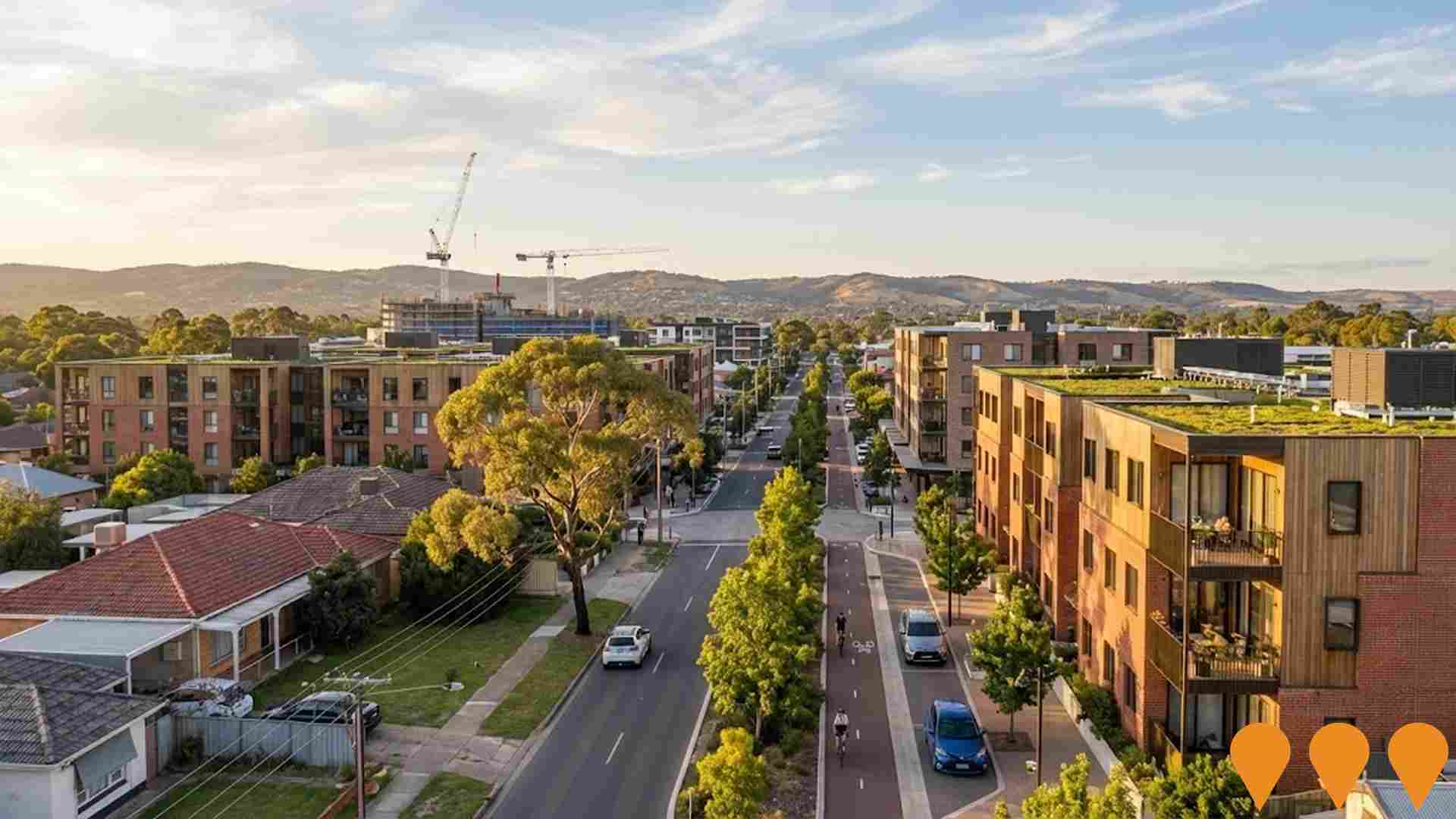
The Gardens Lifestyle Village
Premier retirement lifestyle village featuring 210 modern homes with resort-style recreational facilities. Developed by Lifestyle SA (established 2000), a subsidiary of Pickard Norris Joint Venture. Offers independent living with activities including lawn bowls, swimming pool, gym, and community programs. Located close to shopping, medical clinics, and public transport.
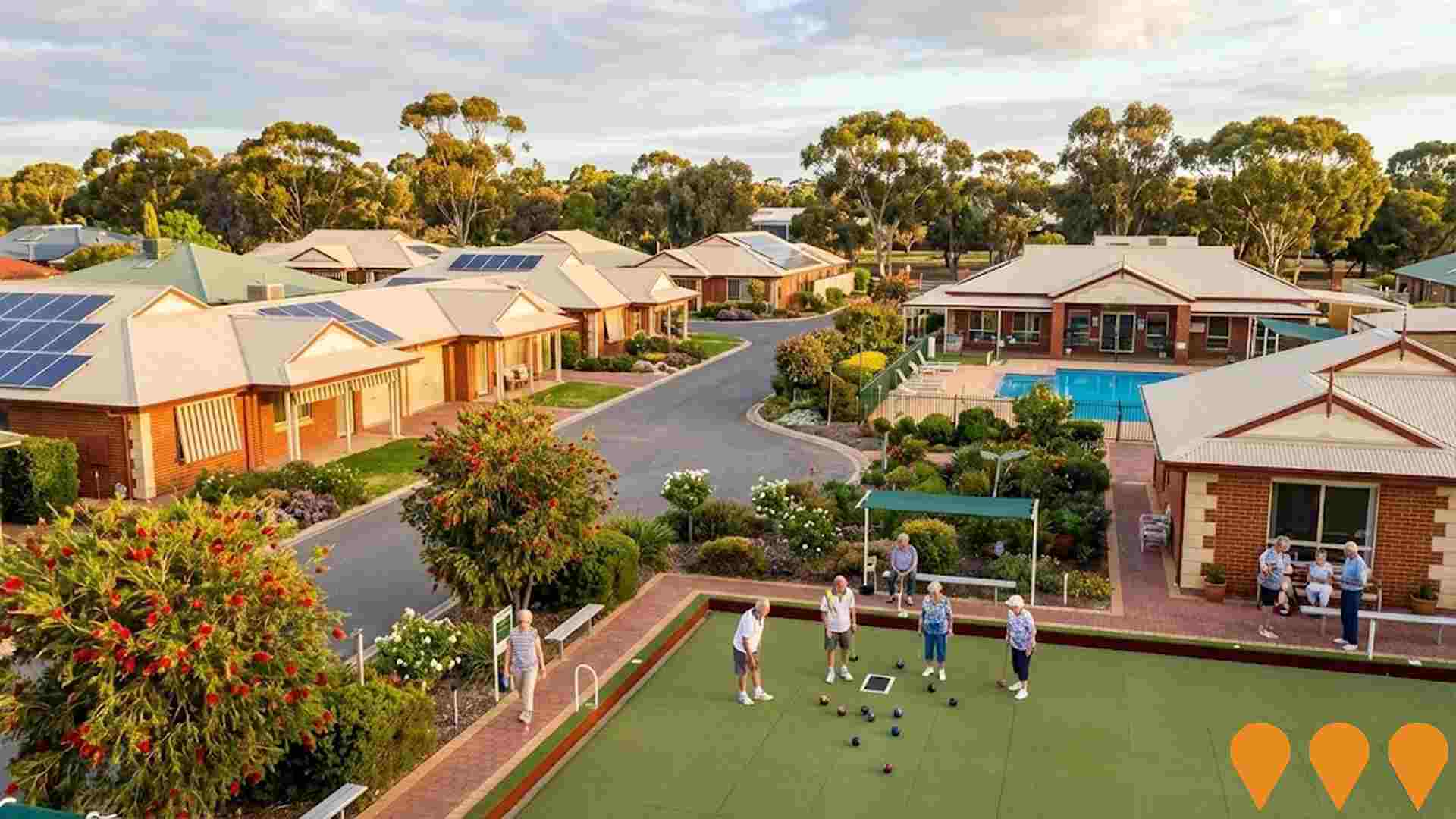
Gawler Line Electrification & Level Crossing Removals (includes Valley View area works)
State government project to electrify the Gawler rail line and remove multiple level crossings, including works affecting the Dry Creek and Valley View area.
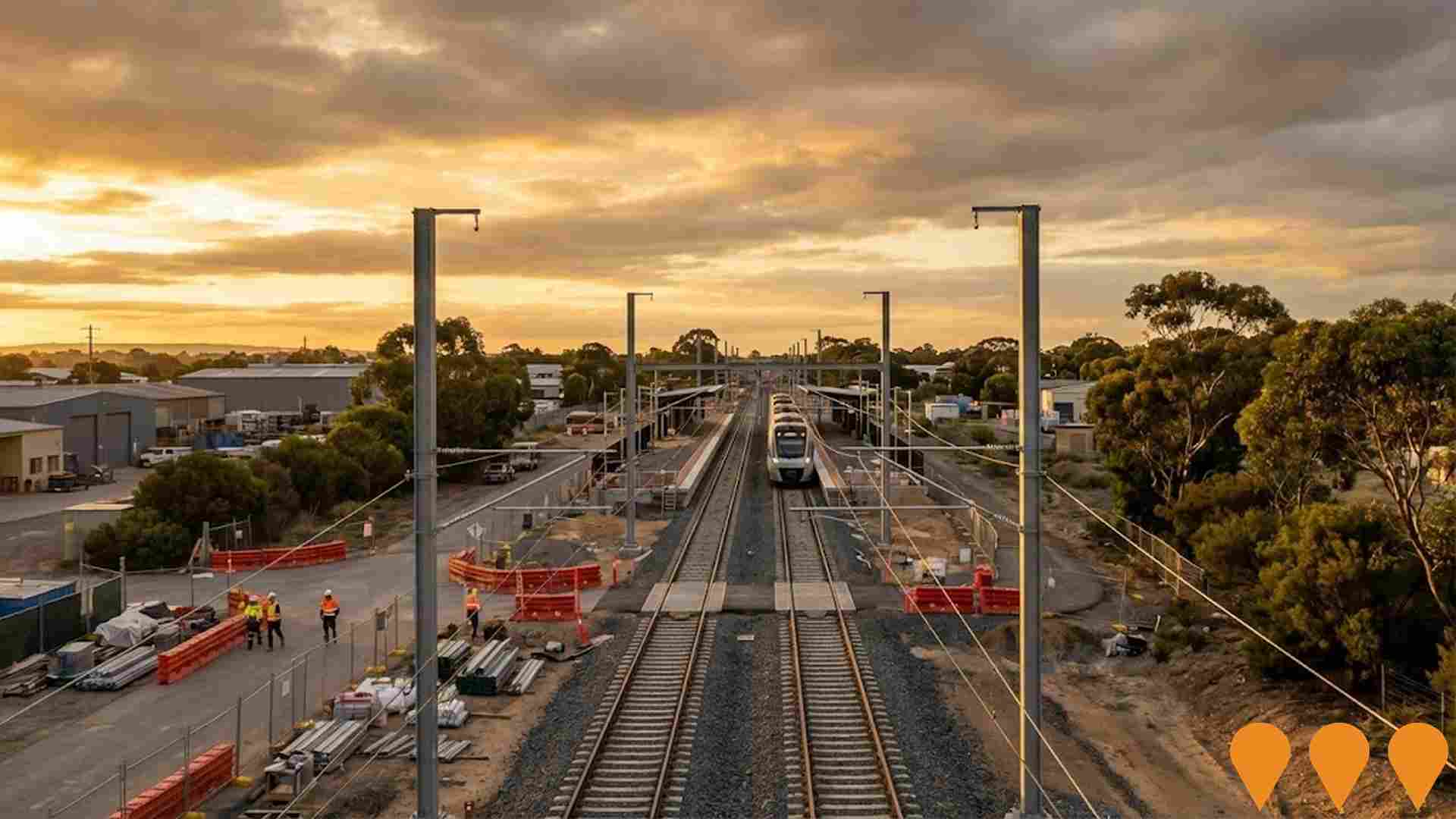
Montague Farm Estate
Large master-planned residential community delivering over 1,000 new homes including townhouses, apartments and detached dwellings in the heart of Pooraka, with integrated parks and community facilities.
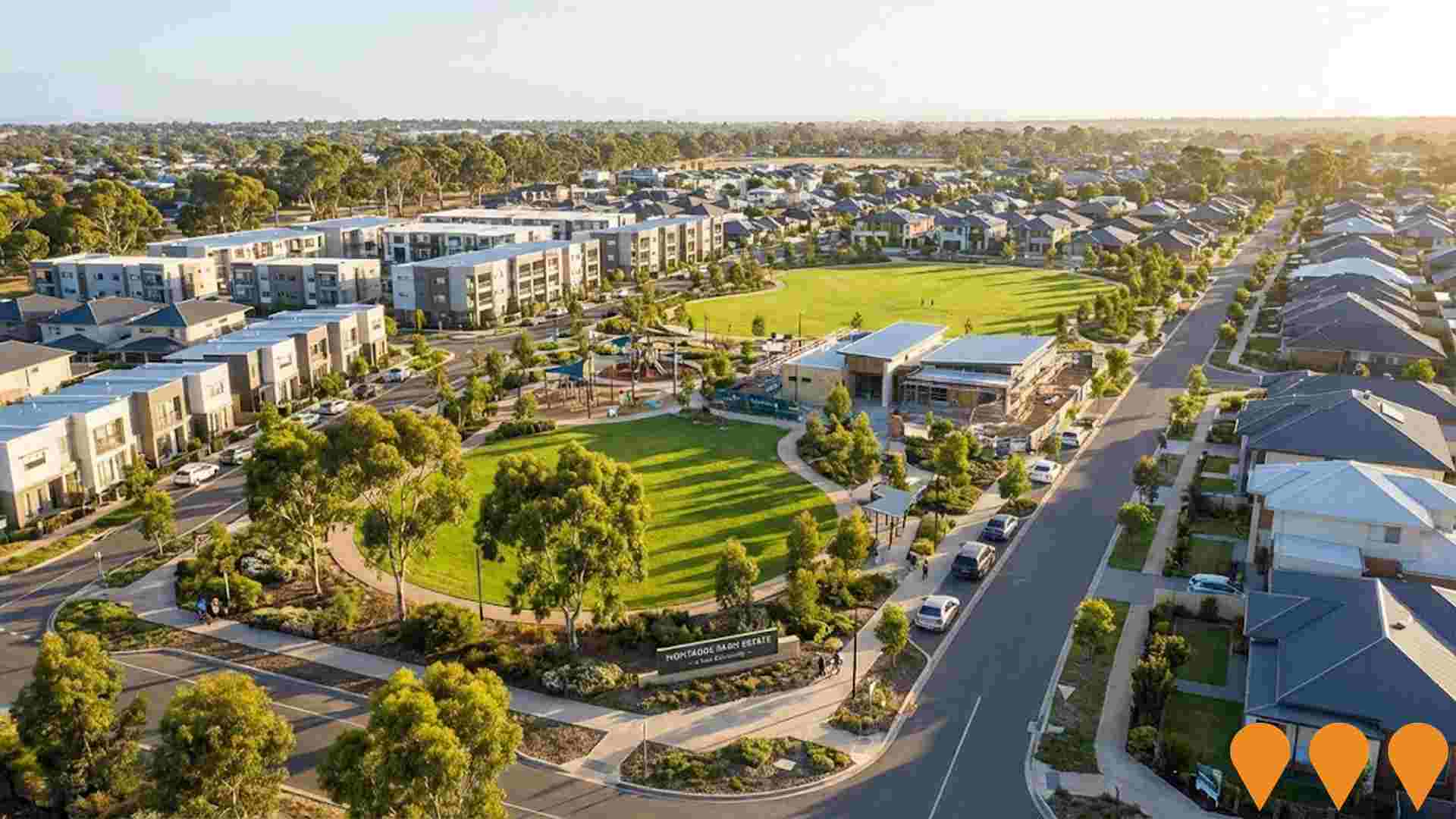
Para Hills Community Hub
Multi-function community hub at 18-22 Wilkinson Road, Para Hills featuring library, community centre, meeting rooms and recreational facilities. Modern facility serving the local Para Hills community with modern amenities supporting local community needs and activities.
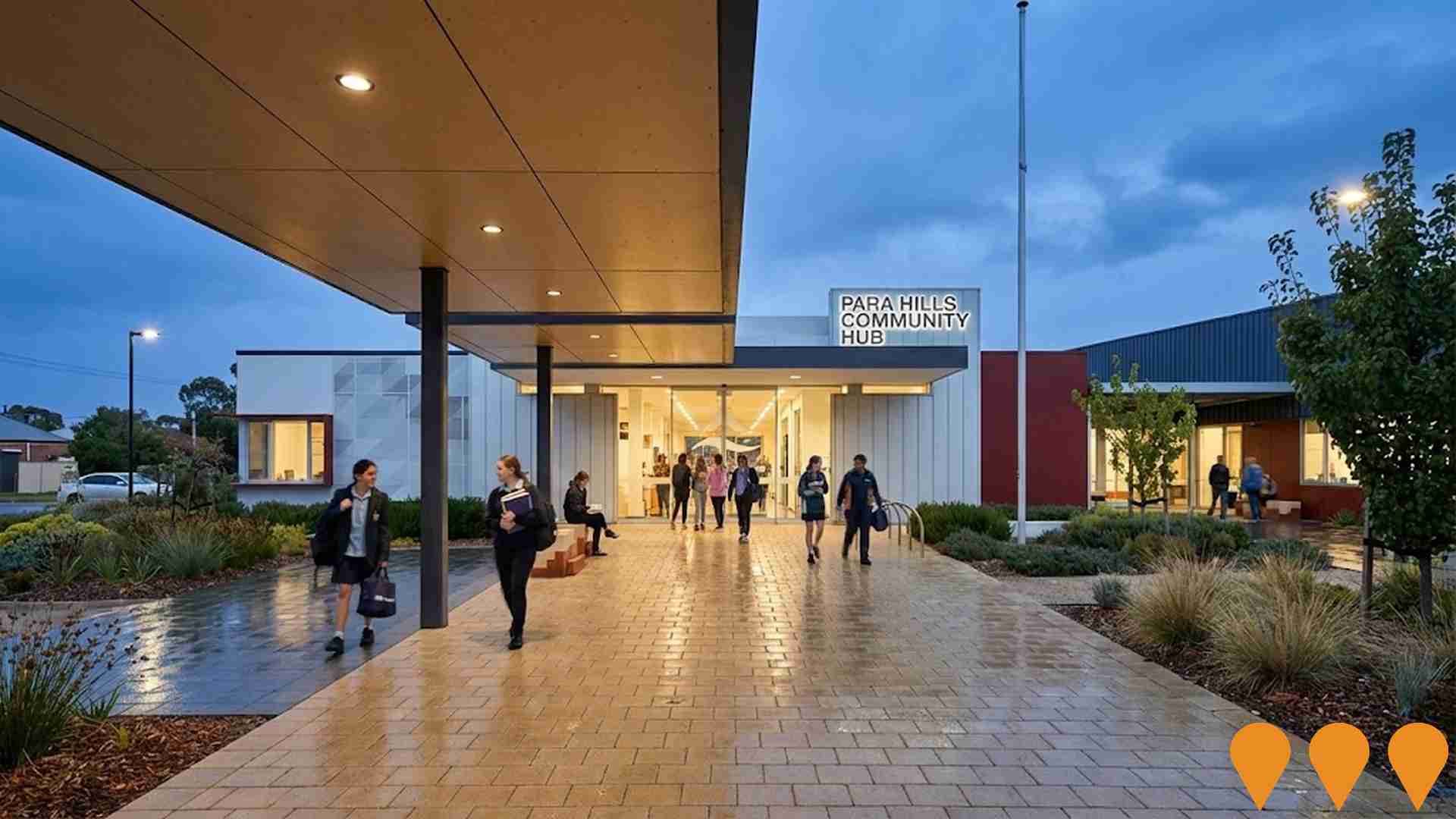
Gardenia Drive Aged Care Expansion
Alterations and additions to the existing Edenfield Family Care aged care facility to modernize and connect existing buildings, add dementia and hospice-capable care, create four courtyards, and increase resident capacity by approximately 47 beds.

Ingle Farm Plaza Retail Expansion
Redevelopment works at Ingle Farm Plaza in Ingle Farm, South Australia, including a centre rebrand from Ingle Farm Shopping Centre to Ingle Farm Plaza, new pylon and entry signage, upgraded internal wayfinding, resurfacing and reconfiguration of parts of the western car park, and construction of two new fast food outlets, McDonalds with double drive thru and Zambrero, in the western car park fronting Walkleys Road. The project refreshes the look and feel of the centre, improves access and parking, and expands the dining offer for the surrounding community.
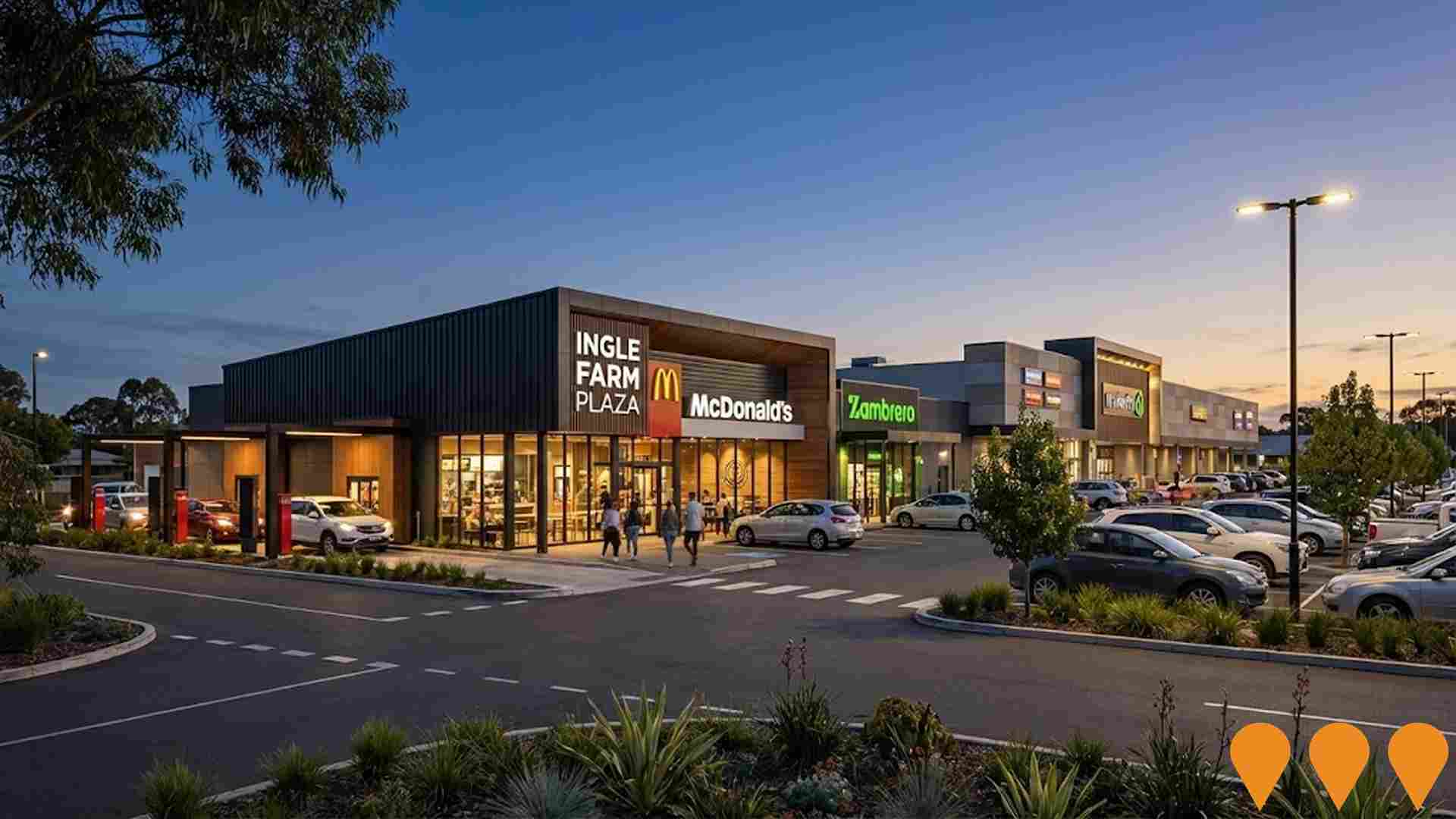
Springbank Waters Residential Estate
A master-planned residential community delivering over 400 new homes including townhouses and land lots in multiple completed and active stages immediately north of Para Hills.

Employment
The labour market in Para Hills demonstrates typical performance when compared to similar areas across Australia
Para Hills has a skilled workforce with an unemployment rate of 3.5% as of June 2025. This is 0.5% lower than Greater Adelaide's rate of 4.0%.
The employment growth over the past year was estimated at 1.7%. As of June 2025, 8,029 residents are in work and workforce participation is broadly similar to Greater Adelaide's 61.7%. The dominant employment sectors include health care & social assistance, construction, and retail trade. Construction shows strong specialization with an employment share of 1.3 times the regional level.
Conversely, professional & technical services have lower representation at 4.3% compared to the regional average of 7.3%. Employment opportunities locally appear limited as indicated by the count of Census working population versus resident population. Between June 2024 and June 2025, employment levels increased by 1.7%, labour force increased by 1.3%, causing unemployment rate to fall by 0.4 percentage points. National employment forecasts from Jobs and Skills Australia, published in May 2025, project national employment growth of 6.6% over five years and 13.7% over ten years. Applying these projections to Para Hills's employment mix suggests local growth of approximately 6.3% over five years and 13.2% over ten years.
Frequently Asked Questions - Employment
Income
Income levels sit below national averages according to AreaSearch assessment
Income data from AreaSearch's postcode-level ATO figures for financial year 2022 shows that median income in Para Hills was $49,215, with average income at $55,806. This is lower than Greater Adelaide's median income of $52,592 and average income of $64,886. By September 2025, adjusted for Wage Price Index growth of 12.83%, estimated incomes are approximately $55,529 (median) and $62,966 (average). Census data from 2021 ranks Para Hills household, family, and personal incomes modestly, between the 28th and 32nd percentiles. The income bracket of $1,500 - 2,999 is dominant in Para Hills, with 34.4% of residents (5,320 people), similar to broader metropolitan trends at 31.8%. After housing costs, 85.8% of income remains for other expenses.
Frequently Asked Questions - Income
Housing
Para Hills is characterized by a predominantly suburban housing profile, with above-average rates of outright home ownership
Para Hills' dwellings, as per the latest Census, consisted of 90.9% houses and 9.2% other dwellings (semi-detached, apartments, 'other'). Adelaide metro had 83.9% houses and 16.0% other dwellings. Home ownership in Para Hills was at 33.2%, with mortgaged dwellings at 44.3% and rented at 22.5%. The median monthly mortgage repayment was $1,322, higher than Adelaide metro's $1,300. Median weekly rent was $310, compared to Adelaide metro's $300. Nationally, Para Hills' mortgage repayments were lower at $1,863 and rents were substantially below the national average of $375.
Frequently Asked Questions - Housing
Household Composition
Para Hills has a typical household mix, with a lower-than-average median household size
Family households comprise 73.6% of all households, including 31.8% couples with children, 26.1% couples without children, and 14.3% single parent families. Non-family households account for the remaining 26.4%, with lone person households at 23.6% and group households making up 2.7%. The median household size is 2.6 people, which is smaller than the Greater Adelaide average of 2.7.
Frequently Asked Questions - Households
Local Schools & Education
Educational outcomes in Para Hills fall within the lower quartile nationally, indicating opportunities for improvement in qualification attainment
The area's university qualification rate is 17.5%, significantly lower than the Australian average of 30.4%. This presents both a challenge and an opportunity for targeted educational initiatives. Bachelor degrees are most common at 12.1%, followed by postgraduate qualifications (3.7%) and graduate diplomas (1.7%). Trade and technical skills are prominent, with 37.4% of residents aged 15+ holding vocational credentials - advanced diplomas (9.1%) and certificates (28.3%).
Educational participation is high at 28.2%, including primary education (10.4%), secondary education (7.1%), and tertiary education (4.7%). Para Hills has five schools with a combined enrollment of 1,712 students, serving typical Australian school conditions (ICSEA: 974) with balanced educational opportunities. Four primary and one secondary school serve distinct age groups. School places per 100 residents are 11.1, below the regional average of 13.9, indicating some students may attend schools in adjacent areas.
Frequently Asked Questions - Education
Schools Detail
Nearby Services & Amenities
Transport
Transport servicing is good compared to other areas nationally based on assessment of service frequency, route connectivity and accessibility
Para Hills has 106 active public transport stops. These are served by a mix of buses operating on 30 different routes. Together, these provide 2,089 weekly passenger trips.
The average distance from residents to the nearest stop is 207 meters. On average, there are 298 trips per day across all routes, which amounts to approximately 19 weekly trips per individual stop.
Frequently Asked Questions - Transport
Transport Stops Detail
Health
Health performance in Para Hills is lower than average with common health conditions somewhat prevalent across both younger and older age cohorts
Para Hills faces significant health challenges, with common health conditions somewhat prevalent across both younger and older age cohorts. The rate of private health cover is very low at approximately 48% of the total population (~7,362 people), compared to the national average of 55.3%.
The most common medical conditions in the area are arthritis and mental health issues, impacting 8.5% and 8.5% of residents respectively. Meanwhile, 67.2% of residents declared themselves completely clear of medical ailments, compared to 68.1% across Greater Adelaide. As of June 2021, the area has 17.0% of residents aged 65 and over (2,624 people). Health outcomes among seniors present some challenges, broadly in line with the general population's health profile.
Frequently Asked Questions - Health
Cultural Diversity
Para Hills was found to be more culturally diverse than the vast majority of local markets in Australia, upon assessment of a range of language and cultural background related metrics
Para Hills, surveyed in July-August 2016, had a higher cultural diversity than most local areas, with 31.7% of its population born overseas and 25.7% speaking languages other than English at home. Christianity was the predominant religion, accounting for 41.3%. The 'Other' religious category was slightly overrepresented at 3.3%, compared to Greater Adelaide's 2.8%.
In terms of ancestry, the top groups were English (27.4%), Australian (22.6%), and Other (13.3%). Some ethnic groups showed notable differences: Polish (1.0% vs regional 1.1%), Hungarian (0.4% vs 0.3%), and Lebanese (0.9% vs 0.4%) were relatively more prominent in Para Hills compared to the Greater Adelaide region.
Frequently Asked Questions - Diversity
Age
Para Hills's population is slightly younger than the national pattern
Para Hills has a median age of 38, closely matching Greater Adelaide's figure of 39 and Australia's median age of 38. Compared to Greater Adelaide's average, Para Hills has an over-representation of the 35-44 age cohort (14.9% locally) and an under-representation of the 75-84 year-olds (5.7%). Between 2021 and present, the 35-44 age group has increased from 13.6% to 14.9% of Para Hills' population, while the 45-54 cohort has decreased from 12.5% to 11.5%. By 2041, demographic modeling projects significant changes in Para Hills' age profile. The 85+ age group is expected to grow by 263 people (78%), from 337 to 601. Notably, the combined 65+ age groups are projected to account for 60% of total population growth. Meanwhile, the 0-4 and 65-74 cohorts are expected to experience population declines.
